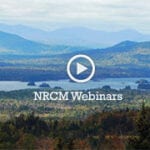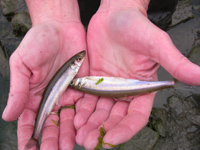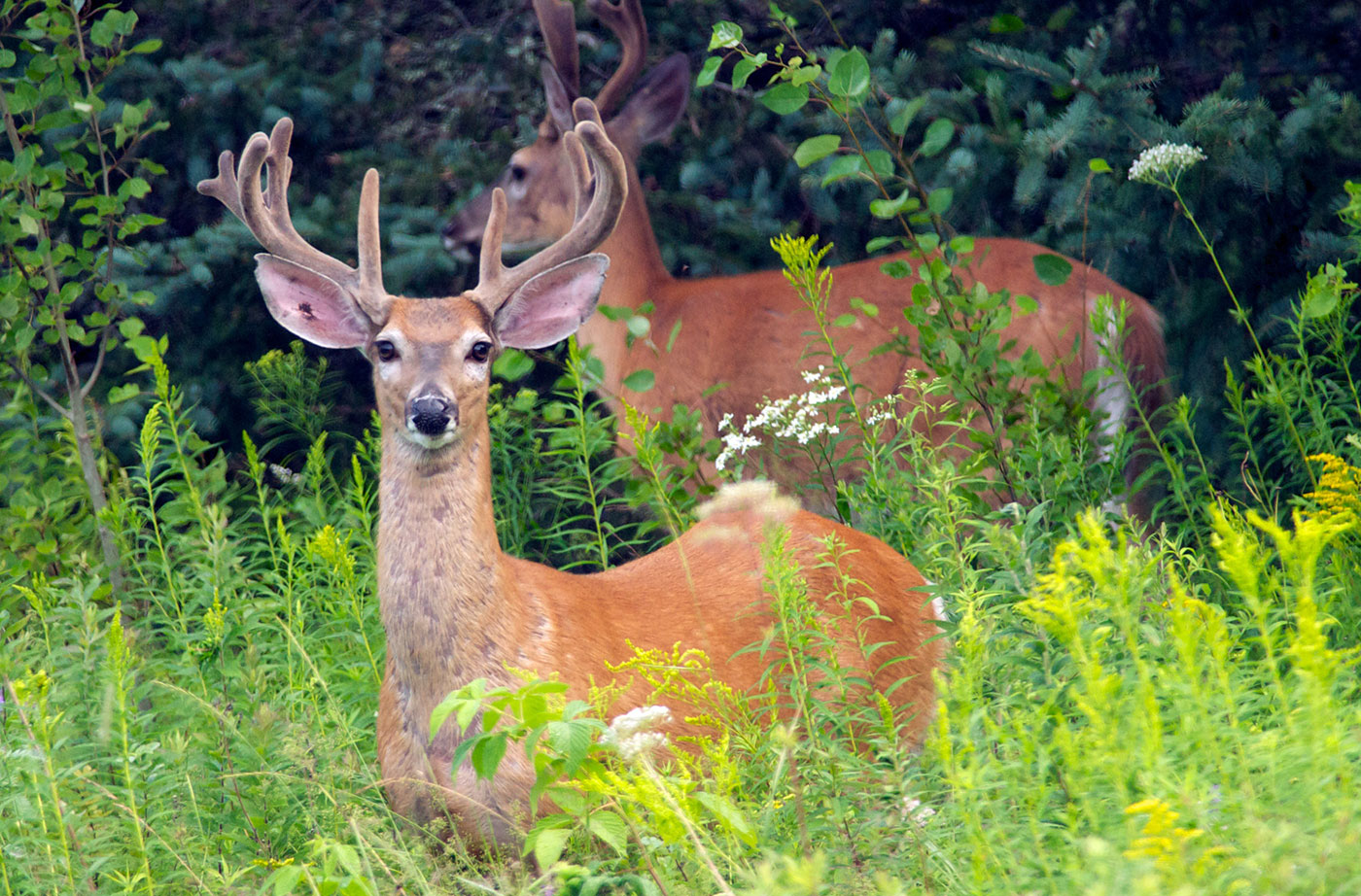Rainbow Smelt Osmerus mordax Cool Fact: Smelt have been fished commercially since the 19th century, with most being landed in Maine waters. One of the great rites of winter in Maine is renting a shack in a smelt camp on the Kennebec River and fishing for smelt through the ice. Warmed by the wood stove Read More
Creature Feature
The Natural Resources Council of Maine works to protect important wildlife habitat for our vast array of animals that live in our state. Our Creature Feature is a way to highlight those animals and share "cool facts" and other important information about them.
NRCM's Creature Feature highlights birds, fish, mammals, and other wildlife that play an important role in the nature of Maine. We have featured "creatures" that are directly affected by our work to protect our clean waters (sea lamprey, Atlantic salmon, lobsters, etc.) and protect wildlife habitat in Maine's North Woods, including in our new Katahdin Woods and Waters National Monument (moose, Canada lynx, black bear, etc.)
Creature Feature: Wood Duck
One of North America’s most beautiful waterfowl species is the Wood Duck. They are so colorful, and their shape so distinctive, that they are difficult to confuse with any other duck species. Males are especially colorful—a combination of iridescent greens, blues, tan, and chestnut. Their bold white chin strap and facial stripes adds to their distinctive beauty.
Creature Feature: White-tailed Deer
White-tailed Deer Odocoileus virginianus borealis Cool Fact: The summer coat hairs of the white-tailed deer are short, thin, and straight; its winter coat hairs are longer, thicker, curly—and hollow, so that the shafts will fill with air for added warmth. Rare is the person who does not recognize a white-tailed deer when they see one! Their Read More
Creature Feature: Wood Frog
With spring in Maine comes the return of many wonderful natural sounds. Among them, the short, distinctive raspy clucks of the wood frog, which some characterize as sounding like the quacking of a duck. About two inches in size, the wood frog is typically tan or dark brown overall, with a white belly that may show dark mottling. They have a distinctive dark “mask” that extends to behind ear, a light stripe on the upper jaw, and a dark patch on the chest near the base of the front legs.
Creature Feature: Sea Lamprey
The sea lamprey is native to Maine. Anything negative you may have heard about it is undoubtedly rumor that has drifted East from some other part of the country where the lamprey is not native and, as non-native introduced species tend to be, is considered a pest. Maine’s lamprey is one of nearly 50 species in rivers and coastal seas around the world.
Creature Feature: Bohemian Waxwing
Unlike most bird species, Bohemian Waxwings do not hold breeding territories, and in winter, they wander in search of large staples of fruits and berries. Typically, they breed from Alaska across northwestern Canada south to British Columbia, with a few breeding records from parts of the northwestern U.S.. But in winter, when their berry supplies become scarce, they wander south, and if we’re lucky, large flocks of these gorgeous birds appear in Maine.
Creature Feature: Alewife
The adult alewife is a sea-run fish about 12 inches long. Each spring, alewives leave the ocean, enter Maine’s coastal rivers, and make their way upstream to spawning habitat in lakes and ponds. Alewives are river herring, a term that also includes their close relatives the blueback herring and American shad.
Creature Feature: Bald Eagle
The Bald Eagle, also known as the American eagle since it occurs only here, is especially noticeable in winter, when eagles from the North and West move to the coast, where the climate is milder and the coastal waters are free of ice. In the winter they roost and hunt in groups, feeding in open water along large tidal rivers of the Maine coast, or perched on frozen ice in search of discards from the fishing shacks.
Creature Feature: Atlantic Salmon
The Atlantic salmon is an anadromous fish, which means it spends the majority of its lifetime in the ocean, but returns to spawn in the same freshwater river or stream where it was born. In Maine, salmon begin returning to their home rivers between March and November, with a peak migration during June and July. Unlike their Pacific cousins, Atlantic salmon do not die after spawning, and can return year after year to reproduce.



















